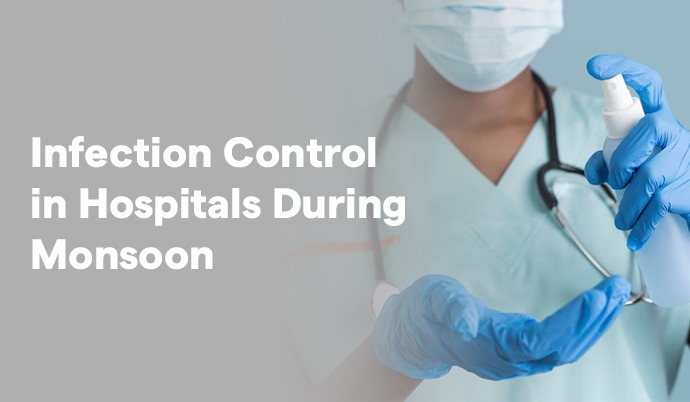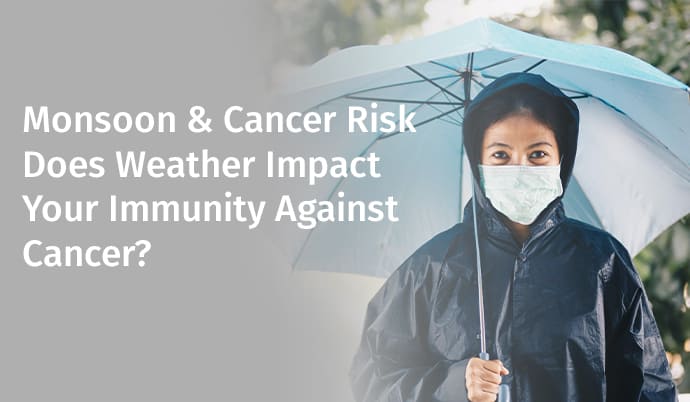
Hence, it is crucial to understand the significance of hospital infection control in the monsoon, where science and sanitation rub shoulders and vigilance is the only barricade to the breaking of the floodgates of disease.
Why Monsoon Troubles the Healthcare System?
Monsoons are associated with humidity, waterlogging, and overcrowding, together with poor sanitation in most parts of India, particularly in urban areas such as Delhi, Mumbai, Kolkata, and Chennai. During this period, hospitals and particularly the state-owned hospitals are usually overstrained. But why?
The National Centre of Disease Control (NCDC) indicates that there is an acute increase in such diseases as leptospirosis, dengue, malaria, typhoid, hepatitis A & E, cholera, and different types of fungal infections during monsoon in India. So here is what makes hospitals breeding grounds of infection:
Greater exposure to wet surfaces and compromised water conditions increases the risk of wetness and dirty water, which leads to a higher risk of death. It is not even helped by the fact that antimicrobial resistance (AMR) is increasing, just like the floodwaters in Bihar.
So, before diving into the conclusive evidence of why and how infection control impacts the health of an individual during monsoon, it is necessary to know about what infectious diseases an individual could contract if proper infection control is not practised at hospitals during monsoon.
1. Respiratory Tract Infections (RTIs)
At the hospital premises, mould, wet bedding and more allergens will be caused by high humidity. Also, add the lack of ventilation. During monsoons, the hospitals turn into very fine breeding-grounds for pneumonia and bronchitis.
2. Urinary tract infection (UTIs)
UTIs are a substantial nosocomial infection in India and can be a result of stagnant water in the bathrooms of a hospital or a lack of proper treatment of catheters.
3. Fungal Infections
Candidiasis through aspergillosis, the doorway of fungal spores is open to the wind at times of humid months. The patients in the ICU and patients on ventilators are particularly susceptible to these fungal infections.
4. Gastrointestinal Infections
Food poisoning, dirty water and poor hand washing lead to diarrhoea, typhoid, and hepatitis.
5. Vector-borne diseases
The mosquitoes do not make reservations before appearing in the hospital corridors. Outbreaks of malaria and dengue begin with inadequate storage of water and uncontrolled breeding sites.
Control Measures at the Hospital
Just as it is with WhatsApp forwarding, infections spread much quickly when uncontrolled. Thus, infection control teams are unsung superheroes that stand behind the masks.
Rule One: The Golden Rule is Standard Precautions First
The Standard Precautions given by the Indian Council of Medical Research (ICMR) and
WHO (World Health Organisation) must be adhered to by every hospital.
The Indian Way: Monsoon-Specific Infection Control Strategies
It is not as though all hospitals in India are well equipped. From the luxurious private hospitals of Delhi to a PHC of Assam affected by floods, the infection control practices have to be cleverly adjusted.
1. Pre-Rains
Hospitals find the need to evaluate:
The checklist to be done before the monsoons can literally save lives.
2. Inside the hospital, Vector Control
3. Water Quality Monitoring
Hospitals must:
According to the Bureau of Indian Standards (BIS), the amount of coliform bacteria in drinking water should be zero per 100ml (it is specifically concerning in the gastroenteritis wards).
4. Linen and Laundry Procedure
5. Waste Management Re-engineering
During rains, the problem of disposing of bio-medical waste (BMW) becomes messy. Hence, proper procedure should be followed to dispose of it diligently through:
According to CPCB 2016 BMW Rules, failure to segregate properly is a punishable act. However, unfortunately, the implementation in monsoon becomes a side interest. That must change.
The Digital Infection Control to the Rescue
Hospitals which have adopted the use of tech have recorded a reduced rate of infections. Here's how:
Training and Awareness
Even all the SOPs of the world will not work out when the hospital staff is not trained. And this is where infection control teams could excel:
A lesson we can not afford to ignore is the COVID-19 pandemic that was indeed a wake-up call. COVID-19 rocked our health sector, and infection control grabbed the attention it had not received before. Hospitals turned into war zones; masks, sanitisers and isolation guidelines. However, there is a twist: monsoon is an annual mini-COVID in the Indian hospital. Having been able to get this kind of efficiency rallied during the pandemic, why can it not be rallied on a day-to-day basis every monsoon? There should be policy interventions. In order to turn monsoon infection control into a national priority, we require:
Skyline can be clouded by the rain, but safety should never be clouded. Hospitals are not just buildings; instead, they are lifelines. And that lifeline is weak in the season of monsoons. A threat might be lurking in every drop of water which trickles through a hole in the wall. Each unscrubbed hand, each damp sheet, each unscrubbed mosquito net might make the balance of health or hazard. However, with a proper combination of planning, training, technology and policy, it is more possible to make monsoon a reparation season, not a season of dangers. We should remember without waiting for the next outbreak. It is time to do something. Since on the scene of infection control, prevention is better than the cure, actually, it is the true cure. So, for proper cure from these infectious breakouts during the monsoon with the touch of world-class hygienic facilities, book an appointment at Sir Ganga Ram Hospital, today.




